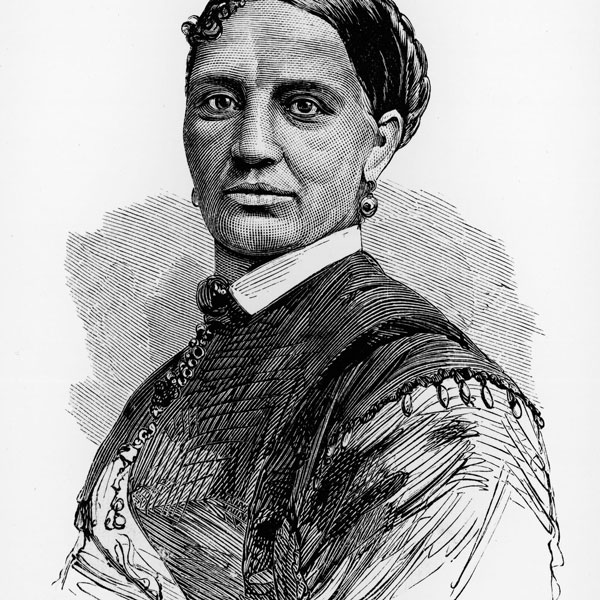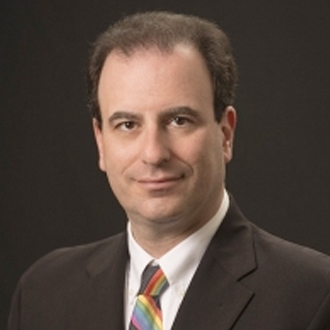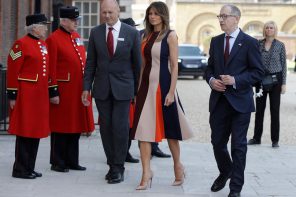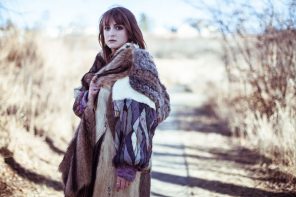The story of Elizabeth Keckley — dressmaker and confidante of Mary Todd Lincoln and later an author and civil rights activist — is one of the most astonishing in the history of American fashion.
Her success involved the dismantling of racial and gender barriers, leading her to fame and fortune during the nation’s most turbulent period.
Born Elizabeth Hobbs in Dinwiddie County, Virginia, around 1818, Keckley was the child of Agnes Hobbs, a house slave, and the man who enslaved Hobbs, Armistead Burwell, a colonel in the War of 1812. Keckley would later recall that he “never liked to see one of his slaves wear a sorrowful face and those who offended in this particular way were always punished.”
At the age of 14, Keckley was sent to North Carolina as a slave to Burwell’s son, Robert, a minister. She endured beatings at the instigation of Robert’s mentally unstable wife, Margaret, and was forced into a sexual relationship with a prominent member of Robert’s congregation. In 1839, that violent union resulted in the birth of her son, George.
Keckley returned to the Burwell farm in Virginia shortly after giving birth and was transferred to the colonel’s daughter, Ann Burwell Garland, and her lawyer-husband, Hugh Garland. In 1847, the Garlands and their slaves relocated to St. Louis. Hugh Garland was financially irresponsible and relied heavily on Keckley’s talent as a seamstress and dressmaker to bring in much-needed funds.
“I was fortunate in obtaining work and, in a short time, I had acquired something of a reputation as a seamstress and dressmaker,” she later wrote. “The best ladies in St. Louis were my patrons and, when my reputation was once established, I never lacked for orders. With my needle, I kept bread in the mouths of 17 persons for two years and five months.”
Garland was among the staunchest proslavery leaders of his time and would later serve as the original lead attorney for John Sanford, the slave owner in the 1857 Dred Scott case that extended slavery to federal territories. When Keckley sought freedom for herself and her son, he demanded $1,200 — approximately $38,000 in today’s money. Keckley managed to raise that amount through savings, gifts and loans collected over a two-year period. She also married James Keckley, an African-American who identified as a free person of color but later turned out to be both a slave and an abusive alcoholic. Leaving her husband, she and her son relocated East and settled in Washington, D.C., in 1860.
Initially working for $2.50 a day as a seamstress for an established dressmaker, Keckley quickly began making connections among the wives of Washington’s most influential leaders and soon started her own dressmaking business. Her patrons included the spouses of two future Confederate leaders — Mary Anna Curtis Lee, wife of General Robert E. Lee, and Varina Davis, wife of President Jefferson Davis. Mrs. Davis even invited Elizabeth to relocate to the South when the Civil War began. (She politely declined the offer.)
Keckley’s most influential patron was, of course, Mary Todd Lincoln, whom she first met on the day of Abraham Lincoln’s first inauguration. Mrs. Lincoln was heavily criticized by the press and many powerful political figures for reckless personal spending during the financially tight years of the Civil War — a habit her husband indulged, purchasing a seed pearl necklace and matching bracelets set from Tiffany & Co. for her to wear to the 1861 inaugural ball. Nevertheless, her Keckley-designed wardrobe received praise for its elegance and style. Keckley’s business blossomed to the point that she had 20 assistants helping on custom-made orders, which often carried a then-extraordinary $100 price tag.
Elizabeth Way, assistant curator of The Museum at FIT (Fashion Institute of Technology), noted that these dresses were far more imaginative than the often-oppressive designs of that rigid era. “Her style was very pared down and sophisticated, which a lot of people don’t imagine when they think of the Victorian era,” Way said in an interview with Smithsonian magazine. “Her designs tended to be very streamlined. Not a lot of lace or ribbon. A very clean design.”
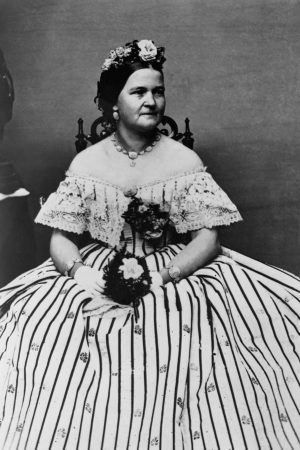
Only a few of the original Keckley-designed garments have survived intact. The Smithsonian Institution’s National Museum of American History has a purple velvet dress worn by Mrs. Lincoln for her husband’s second inauguration, while a buffalo plaid green and white day dress with a cape from Mrs. Lincoln’s wardrobe is on display at the Chicago History Museum. The Keckley dresses were featured in the photographic portraits taken of Mrs. Lincoln during the early 1860s — and while these photographs are in black and white, Keckley’s charming style still offers a sense of feminine gaiety that transcends the monochromatic limits of the pictures.
In addition to dressing the first lady, Keckley found herself becoming Mrs. Lincoln’s confidante. Over time, the women began to rely heavily on each other for emotional support. When George Keckley was killed in battle while serving in the Union Army in 1861, Mrs. Lincoln helped cut through the red tape to get a pension approved for Keckley as a widow whose only son was killed in the Civil War. George passed for white, while his mother identified as black, which created confusion in processing the pension request. In 1862, Mrs. Lincoln supported Keckley’s creation of the Contraband Relief Association to assist freed slaves and black Union soldiers with food, clothing and shelter. Keckley comforted Mrs. Lincoln over the death of her 11-year-old son Willie in 1862, and relocated with Mrs. Lincoln from Washington in the aftermath of the president’s assassination three years later.
Although Keckley later returned to Washington to resume her business, Mrs. Lincoln repeatedly called on her for assistance in the emotionally and financially stressful period following her husband’s death. An effort by Mrs. Lincoln to raise funds by selling many of the dresses Keckley made for her along with other possessions created a national scandal that humiliated the president’s widow. Keckley hoped to change public opinion by writing a book that sympathetically detailed life within the Lincoln White House. Her 1868 book, “Behind the Scenes: Or, Thirty Years a Slave and Four Years in the White House,” combined autobiographical chapters of her years in enslavement with an uncommon in-depth consideration of the Lincolns’ private life in Washington. The book also included private letters from Mrs. Lincoln to Keckley.
While publisher Carleton & Co. trumpeted the book as a “great sensational disclosure,” most of the reaction to its release was negative, even by those who professed a liking for Mrs. Lincoln. Keckley was accused of betraying the trust of the former first family, and her race was used as a launching point of vituperative attacks by many critics who questioned her sincerity and intelligence. Today, the book is cited as an invaluable insider’s view into the Lincoln family, and it has been endlessly sourced in multiple biographies on President and Mrs. Lincoln.
Mrs. Lincoln refused to speak with Keckley after the book’s publication, dismissing her as a “colored historian” and ignoring Keckley’s sincere letters seeking reconciliation. The fallout from the book effectively ended Keckley’s career as a dressmaker. She struggled to make ends meet for years before regaining a late-life career boost in 1892 when she was invited by Wilberforce University in Ohio to become head of its Department of Sewing and Domestic Science Arts. The following year, she was in the public spotlight again when she organized a dress exhibit at the Chicago World’s Fair.
By the end of the century, however, she returned to Washington in ill health and took up residence in the National Home for Destitute Colored Women and Children. She died of a stroke in 1907.
For many years, Keckley was viewed as a footnote in the wider story of the Civil War era. Today, she is acknowledged as an important historical figure who lived a remarkable life through extraordinary times and who made her mark through creativity and perseverance.

